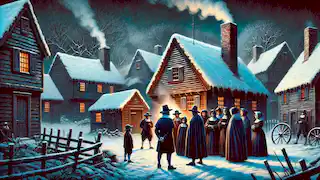<_img-intro}}}
In the bleak winter of 1692, the small Puritan town of Salem, Massachusetts, became the epicenter of one of the most infamous events in American history—the Salem Witch Trials. The trials, which saw over 200 people accused of witchcraft, resulted in the execution of 20 people, mostly women. The hysteria surrounding the trials has left a lasting imprint on American culture, representing a dark period of fear, superstition, and injustice. This story delves deep into the events that transpired, exploring the societal, religious, and psychological factors that fueled the tragic events.
Puritan Life and the Roots of Suspicion
To understand the Salem Witch Trials, it is essential to first understand the rigid Puritan society of colonial Massachusetts. Puritans, seeking religious freedom from the Church of England, had established communities in New England in the early 1600s. They were a deeply religious and conservative group who believed in strict adherence to the Bible. Anything seen as deviant from their beliefs was considered a threat, both spiritually and socially.
In Salem, a town already experiencing hardship due to a harsh winter, crop failures, and fear of attacks from neighboring Native American tribes, tensions were high. In times of great stress, people often look for scapegoats, and in this case, the fear of witches—individuals believed to be in league with the devil—took root.
The fear of witchcraft was not unique to Salem. Across Europe, witch hunts had claimed thousands of lives by the end of the 17th century. However, in Salem, the combination of religious zealotry, social tensions, and economic difficulties created a perfect storm. The events that followed were born out of a deeply ingrained fear of the supernatural and a desire to explain the misfortunes afflicting the community.
The First Accusations
The spark that ignited the Salem Witch Trials came from the household of Reverend Samuel Parris, the Puritan minister of Salem Village. In the early months of 1692, Parris' daughter, Betty, and niece, Abigail Williams, began exhibiting strange behavior. They would scream, convulse, and speak in unintelligible tongues, leading the townspeople to believe they were possessed by witches. Soon, other girls in the village began to show similar symptoms, escalating the panic.
Under pressure from the community, the girls were asked to identify who had bewitched them. They pointed to three women: Sarah Good, Sarah Osborne, and Tituba, an enslaved woman of Native American or African descent. The accusations against these women were convenient—Good and Osborne were outcasts in society, and Tituba, a servant in the Parris household, was an easy target due to her ethnic background and lower status.
When Tituba was brought in for questioning, she initially denied any involvement in witchcraft. However, after intense pressure and likely fearing for her life, she confessed to practicing witchcraft and claimed that there were other witches in the village. This confession added fuel to the fire, and soon the hunt for witches began in earnest.
The Escalation of Hysteria
Once the accusations began, they spread rapidly. Fear and paranoia gripped the village as more and more people were accused of witchcraft. The legal system in Massachusetts at the time had no clear guidelines for handling such cases, and the trials quickly spiraled out of control. The spectral evidence—testimony that the spirit or specter of the accused was seen committing witchcraft—was often the primary form of evidence used to convict someone.
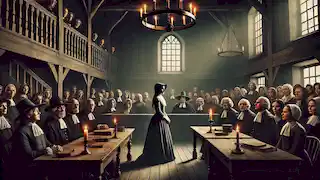
This type of evidence was particularly dangerous because it was impossible to refute. The accusers, mostly young girls in the village, would claim to see the spirits of the accused tormenting them, and their word was taken as truth. Anyone who questioned the legitimacy of these claims risked being accused of witchcraft themselves. As the trials continued, people from all walks of life—farmers, merchants, ministers—were accused and arrested.
The first major trial took place in June 1692, when Bridget Bishop, a local woman known for her abrasive personality, was found guilty of witchcraft. Despite the lack of concrete evidence against her, she was hanged, becoming the first of many victims.
The Trials and Executions
As the summer of 1692 wore on, the number of people accused and arrested grew. The trials themselves were a spectacle, drawing large crowds eager to witness the proceedings. The accused were often subjected to harsh interrogations, and those who confessed to witchcraft in hopes of avoiding execution were forced to implicate others, further perpetuating the cycle of accusations.
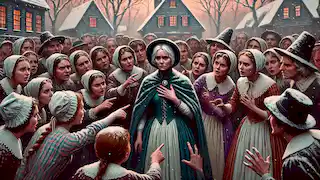
The judges overseeing the trials were highly influential men in the community, but their judgment was clouded by fear and a desire to purge the town of perceived evil. One of the most notorious judges was Samuel Sewall, who later expressed deep regret for his role in the trials.
The executions took place on Gallows Hill, a desolate spot outside Salem. Nineteen people were hanged over the course of several months, and one man, Giles Corey, was pressed to death with heavy stones after refusing to enter a plea. The sight of innocent people being executed only heightened the hysteria, as those still unaccused feared they might be next.
The End of the Trials
By the fall of 1692, the tide began to turn. Some influential members of the community, including Increase Mather, a prominent minister, began to speak out against the use of spectral evidence in the trials. Mather argued that it was better for ten guilty people to go free than for one innocent person to be wrongfully condemned. His voice, combined with growing doubts about the legitimacy of the trials, led to a gradual cessation of the proceedings.
Governor William Phips, who had initially supported the trials, intervened in October 1692, putting an end to the Court of Oyer and Terminer, which had been conducting the trials. He replaced it with a new court that no longer accepted spectral evidence, effectively halting the witch hunts.
Although the trials were over, the damage had been done. In total, 20 people were executed, and many others had their lives ruined by false accusations and imprisonment.
The Aftermath and Legacy
The aftermath of the Salem Witch Trials was a time of reflection and remorse. The community of Salem was left grappling with the tragedy and trying to make sense of what had happened. In 1697, Samuel Sewall, one of the judges who had presided over the trials, publicly apologized for his role in the events. He stood in front of his congregation and confessed his guilt, asking for forgiveness from God and the people.
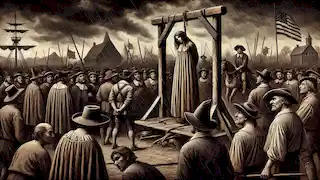
Other figures, such as Cotton Mather, defended their actions, though Mather himself had expressed some reservations about the use of spectral evidence. The Puritan leadership tried to distance themselves from the trials, and in the years that followed, the events of 1692 were regarded as a cautionary tale about the dangers of superstition and religious extremism.
The legacy of the Salem Witch Trials continues to resonate in American culture. The trials have been immortalized in literature, film, and theater, most famously in Arthur Miller’s play *The Crucible*, which used the events of Salem as an allegory for McCarthyism in the 1950s. The story of the trials serves as a reminder of the dangers of mass hysteria, intolerance, and the breakdown of due process.
Salem Today
Today, Salem has embraced its history as the site of the infamous witch trials, attracting thousands of tourists each year. The town has numerous museums, memorials, and reenactments that explore the history of the trials and their impact on American society.
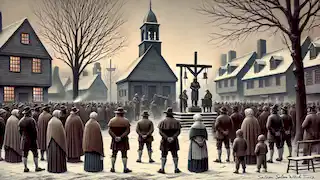
In 1992, on the 300th anniversary of the trials, the state of Massachusetts formally apologized for the events of 1692. A memorial was erected to honor the victims, and the town has worked to ensure that the lessons of the trials are not forgotten. Visitors to Salem can now walk the same streets where the events took place, visit the home of Judge Jonathan Corwin, one of the key figures in the trials, and reflect on the consequences of unchecked fear and hysteria.
Reflections on Justice and Fear
The Salem Witch Trials stand as a powerful example of the dangers posed by fear, ignorance, and the breakdown of rational thought. In times of crisis, communities are often driven to make decisions based on emotion rather than reason, and innocent lives are put at risk. The trials highlight the importance of upholding justice, due process, and the presumption of innocence, even in the face of overwhelming public pressure.
Although the events of Salem are now over 300 years in the past, their lessons remain relevant today. The trials remind us of the potential for societies to descend into chaos when fear overrides logic and when people allow themselves to be swept up in the fervor of mass hysteria. They also serve as a reminder that justice is a fragile thing and must be vigilantly protected, even in the most trying of times.
Conclusion
The story of the Salem Witch Trials is one of fear, superstition, and tragedy. It reflects the darker side of human nature, where the fear of the unknown can lead to the persecution of the innocent. Yet, it also offers hope, as the aftermath of the trials brought about a recognition of the importance of fairness, justice, and the protection of individual rights. Today, the trials are a symbol of the dangers of mass hysteria and a call to remember the value of reason and justice in the face of fear.
